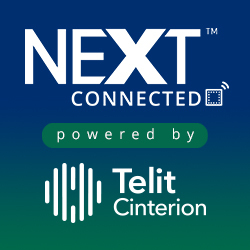Johnson digital suite makes offices safer
- September 3, 2020
- Steve Rogerson

Johnson Controls is launching a suite of digital products to make shared spaces safer as people begin to return to offices.
Called OpenBlue Healthy Buildings, it combines 135 years of building systems expertise with the latest technology to protect and instil confidence in building occupants and visitors, reduce disruption should employees test positive for Covid-19, and accelerate building re-occupancy by automating and streamlining safety protocols.
Additionally, users will be able to increase occupancy targets while maintaining safety, understand how their spaces are used and repurposed easily based on data, and help employees be more productive when they are in the office.
OpenBlue Healthy Building features are integrated but can also be deployed modularly, and include a combination of hardware and software – such as smart equipment, digital sensors, security systems, cameras, monitors, analytics, dashboards and infection control – as well as a mobile app to manage spaces and occupant experiences.
The workplace offering was developed using privacy by design and supports privacy by default.
Modules to re-enter, reoccupy and reimagine include:
- Contact tracing: Automated contact tracing capabilities are the foundational element of this suite and enable other technologies. Overall, these allow building management and employers to understand risks of exposure for building occupants. If an occupant tests positive, the system can retroactively trace person-to-person and person-to-space contact to provide nearly immediate support to personnel and facility teams in reaching out to at risk workers, addressing potentially impacted areas, and taking preventive measures to reduce spread. Furthermore, contact tracing provides peace-of-mind for employees in the event someone has tested positive.
- Social distancing monitoring: It can monitor social distancing in real time, sending violation alerts should occupants be too close together or spaces become over occupied, enabling compliance reporting and real-time behaviour changes to prevent infection spread.
- Thermal cameras: To ensure a holistic approach to safety, it includes temperature-screening technology that takes measurements while an individual is walking to allow for frictionless entry and exits, and prevent infection spread.
- Scenario planning: It proactively determines connections between people and spaces, predicts impacts from possible negative events, enables intervention before disruption, and reduces risk.
- Infection control: It creates a layered approach to connectivity between various systems integral to infection control. These include systems that reduce indoor and airborne pathogens by increasing outdoor air ventilation, disinfecting ultraviolet C lighting, and remote monitoring of room pressurisation, air change rates, humidity and temperature to create healthier air.
- Mapping and monitoring space use: The mobile app provides live map views of sanitisation status, occupancy data and recommendations for navigating the building safely to monitor how spaces are being used. The system is platform agnostic and works seamlessly with existing building management systems to support activities such as booking conference rooms or individual workstations with indication of sanitisation status.
- Communication and experiences: The mobile app helps engage employees and occupants in real time by providing updates about shared spaces and new policies, preferred wayfinding to avoid crowded areas, space availability and safety details, phone as badge access, SOS response, rotational schedule support, health attestation and self-reporting options, and more. These increase communication touchpoints between building management, personnel departments and employees to provide real-time information and transparency, while also supporting productivity and experience features, such as calendar integration and comfort control.
“As more buildings welcome back their employees, it’s critical we deploy cutting edge technology coupled with our building expertise to create the smartest, safest spaces and places for occupants and visitors,” said Mike Ellis, executive vice president at Johnson Controls. “We are innovating with partners and customers to create technology that will transform buildings and spaces, from thermal cameras to contact tracing capabilities.”
The OpenBlue platform – launched in July – helps buildings become dynamic spaces. Using the platform, customers will be able to manage operations more systemically, delivering buildings that have memory, intelligence and unique identity.
Johnson Controls has a global team of 105,000 experts in more than 150 countries. Its portfolio of building technology includes names such as Tyco, York, Metasys, Ruskin, Titus, Frick, Penn, Sabroe, Simplex, Ansul and Grinnell.





